Neo Gipedo Panathinaikou
Updated: 08.12.2025
| Target capacity | 40 000 |
|---|---|
| Country | Greece |
| City | Athens |
| Clubs | Panathinaikos |
| Category | Construction in progress |
| Other names | Votanikos Arena |
| Cost | €125 M ($143.6 M) |
| Construction | 2023–2027 |
| Design | A&S Architects |
| Contractor | GEK Terna, Ellaktor and Mytilineos consortium |
Advertisement
Neo Gipedo Panathinaikou – construction description
Panathinaikos is one of the most successful and recognizable football clubs in Greece. The team currently plays at its own ground, the so-called Leoforos, which – despite its unique character and emotional significance for supporters – is now too small and outdated.
For many years, efforts have been underway to provide the club with a modern stadium worthy of its history and stature in Greek football. Over time, various ideas were discussed, including both the modernization of the existing venue and the construction of an entirely new one in a different location.
Ultimately, a site in the Votanikos district was chosen – an area previously occupied by industrial facilities. Nearly two decades passed from the initial concept until early 2025, when foundation works finally began. The opening of the new stadium is planned for the start of the 2027/28 season.
Although the new venue will be a football-specific stadium, it is being built on a circular plan. With a capacity of 40,000 spectators, it will feature a dynamic, flowing form inspired by the home of FC Porto, Estádio do Dragão.
More details about the design of the new Panathinaikos stadium can be found on a dedicated subpage
Advertisement
Pictures
-
08.12.2025
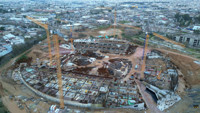
08.12.2025 © GEORGE TSAPOGAS 
08.12.2025 © GEORGE TSAPOGAS 
08.12.2025 © GEORGE TSAPOGAS
23.11.2025

23.11.2025 © GEORGE TSAPOGAS 
23.11.2025 © GEORGE TSAPOGAS 
23.11.2025 © GEORGE TSAPOGAS 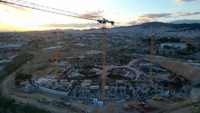
23.11.2025 © GEORGE TSAPOGAS 
23.11.2025 © GEORGE TSAPOGAS 
23.11.2025 © GEORGE TSAPOGAS 
23.11.2025 © GEORGE TSAPOGAS 
23.11.2025 © GEORGE TSAPOGAS 
23.11.2025 © GEORGE TSAPOGAS
03.11.2025

03.11.2025 © GEORGE TSAPOGAS 
03.11.2025 © GEORGE TSAPOGAS 
03.11.2025 © GEORGE TSAPOGAS 
03.11.2025 © GEORGE TSAPOGAS 
03.11.2025 © GEORGE TSAPOGAS 
03.11.2025 © GEORGE TSAPOGAS
19.10.2025

19.10.2025 © GEORGE TSAPOGAS 
19.10.2025 © GEORGE TSAPOGAS 
19.10.2025 © GEORGE TSAPOGAS 
19.10.2025 © GEORGE TSAPOGAS 
19.10.2025 © GEORGE TSAPOGAS 
19.10.2025 © GEORGE TSAPOGAS
22.09.2025

22.09.2025 © GEORGE TSAPOGAS 
22.09.2025 © GEORGE TSAPOGAS 
22.09.2025 © GEORGE TSAPOGAS 
22.09.2025 © GEORGE TSAPOGAS 
22.09.2025 © GEORGE TSAPOGAS 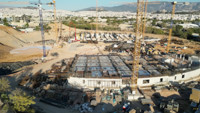
22.09.2025 © GEORGE TSAPOGAS 
22.09.2025 © GEORGE TSAPOGAS 
22.09.2025 © GEORGE TSAPOGAS 
22.09.2025 © GEORGE TSAPOGAS
15.09.2025

15.09.2025 © GEORGE TSAPOGAS 
15.09.2025 © GEORGE TSAPOGAS 
15.09.2025 © GEORGE TSAPOGAS 
15.09.2025 © GEORGE TSAPOGAS 
15.09.2025 © GEORGE TSAPOGAS 
15.09.2025 © GEORGE TSAPOGAS 
15.09.2025 © GEORGE TSAPOGAS 
15.09.2025 © GEORGE TSAPOGAS 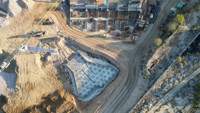
15.09.2025 © GEORGE TSAPOGAS
01.09.2025

01.09.2025 © GEORGE TSAPOGAS 
01.09.2025 © GEORGE TSAPOGAS 
01.09.2025 © GEORGE TSAPOGAS 
01.09.2025 © GEORGE TSAPOGAS 
01.09.2025 © GEORGE TSAPOGAS 
01.09.2025 © GEORGE TSAPOGAS 
01.09.2025 © GEORGE TSAPOGAS 
01.09.2025 © GEORGE TSAPOGAS 
01.09.2025 © GEORGE TSAPOGAS
11.08.2025

11.08.2025 © GEORGE TSAPOGAS 
11.08.2025 © GEORGE TSAPOGAS 
11.08.2025 © GEORGE TSAPOGAS 
11.08.2025 © GEORGE TSAPOGAS 
11.08.2025 © GEORGE TSAPOGAS 
11.08.2025 © GEORGE TSAPOGAS 
11.08.2025 © GEORGE TSAPOGAS 
11.08.2025 © GEORGE TSAPOGAS 
11.08.2025 © GEORGE TSAPOGAS
21.07.2025

21.07.2025 © GEORGE TSAPOGAS 
21.07.2025 © GEORGE TSAPOGAS 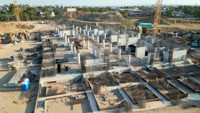
21.07.2025 © GEORGE TSAPOGAS 
21.07.2025 © GEORGE TSAPOGAS 
21.07.2025 © GEORGE TSAPOGAS 
21.07.2025 © GEORGE TSAPOGAS 
21.07.2025 © GEORGE TSAPOGAS 
21.07.2025 © GEORGE TSAPOGAS 
21.07.2025 © GEORGE TSAPOGAS
23.06.2025

23.06.2025 © GEORGE TSAPOGAS 
23.06.2025 © GEORGE TSAPOGAS 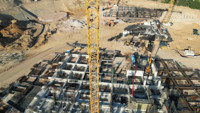
23.06.2025 © GEORGE TSAPOGAS 
23.06.2025 © GEORGE TSAPOGAS 
23.06.2025 © GEORGE TSAPOGAS 
23.06.2025 © GEORGE TSAPOGAS 
23.06.2025 © GEORGE TSAPOGAS 
23.06.2025 © GEORGE TSAPOGAS 
23.06.2025 © GEORGE TSAPOGAS 
23.06.2025 © GEORGE TSAPOGAS 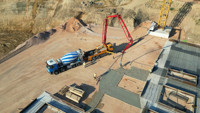
23.06.2025 © GEORGE TSAPOGAS 
23.06.2025 © GEORGE TSAPOGAS
15.06.2025

15.06.2025 © GEORGE TSAPOGAS 
15.06.2025 © GEORGE TSAPOGAS 
15.06.2025 © GEORGE TSAPOGAS 
15.06.2025 © GEORGE TSAPOGAS 
15.06.2025 © GEORGE TSAPOGAS 
15.06.2025 © GEORGE TSAPOGAS 
15.06.2025 © GEORGE TSAPOGAS 
15.06.2025 © GEORGE TSAPOGAS 
15.06.2025 © GEORGE TSAPOGAS 
15.06.2025 © GEORGE TSAPOGAS 
15.06.2025 © GEORGE TSAPOGAS 
15.06.2025 © GEORGE TSAPOGAS
02.06.2025

02.06.2025 © GEORGE TSAPOGAS 
02.06.2025 © GEORGE TSAPOGAS 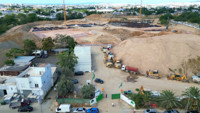
02.06.2025 © GEORGE TSAPOGAS 
02.06.2025 © GEORGE TSAPOGAS 
02.06.2025 © GEORGE TSAPOGAS 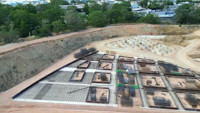
02.06.2025 © GEORGE TSAPOGAS 
02.06.2025 © GEORGE TSAPOGAS 
02.06.2025 © GEORGE TSAPOGAS 
02.06.2025 © GEORGE TSAPOGAS
12.05.2025

12.05.2025 © GEORGE TSAPOGAS 
12.05.2025 © GEORGE TSAPOGAS 
12.05.2025 © GEORGE TSAPOGAS 
12.05.2025 © GEORGE TSAPOGAS 
12.05.2025 © GEORGE TSAPOGAS 
12.05.2025 © GEORGE TSAPOGAS
15.04.2025

15.04.2025 © GEORGE TSAPOGAS 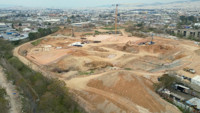
15.04.2025 © GEORGE TSAPOGAS 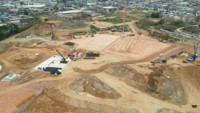
15.04.2025 © GEORGE TSAPOGAS 
15.04.2025 © GEORGE TSAPOGAS 
15.04.2025 © GEORGE TSAPOGAS 
15.04.2025 © GEORGE TSAPOGAS 
15.04.2025 © GEORGE TSAPOGAS 
15.04.2025 © GEORGE TSAPOGAS 
15.04.2025 © GEORGE TSAPOGAS
30.03.2025

30.03.2025 © GEORGE TSAPOGAS 
30.03.2025 © GEORGE TSAPOGAS 
30.03.2025 © GEORGE TSAPOGAS 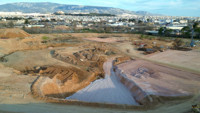
30.03.2025 © GEORGE TSAPOGAS 
30.03.2025 © GEORGE TSAPOGAS 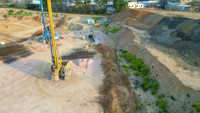
30.03.2025 © GEORGE TSAPOGAS 
30.03.2025 © GEORGE TSAPOGAS 
30.03.2025 © GEORGE TSAPOGAS 
30.03.2025 © GEORGE TSAPOGAS
15.02.2025

15.02.2025 © GEORGE TSAPOGAS 
15.02.2025 © GEORGE TSAPOGAS 
15.02.2025 © GEORGE TSAPOGAS 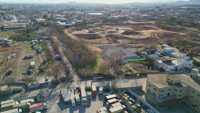
15.02.2025 © GEORGE TSAPOGAS 
15.02.2025 © GEORGE TSAPOGAS 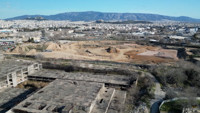
15.02.2025 © GEORGE TSAPOGAS 
15.02.2025 © GEORGE TSAPOGAS 
15.02.2025 © GEORGE TSAPOGAS 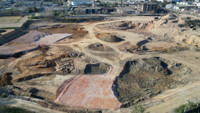
15.02.2025 © GEORGE TSAPOGAS
02.02.2025

02.02.2025 © GEORGE TSAPOGAS 
02.02.2025 © GEORGE TSAPOGAS 
02.02.2025 © GEORGE TSAPOGAS 
02.02.2025 © GEORGE TSAPOGAS 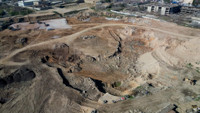
02.02.2025 © GEORGE TSAPOGAS 
02.02.2025 © GEORGE TSAPOGAS 
02.02.2025 © GEORGE TSAPOGAS 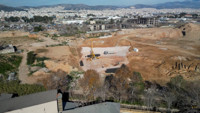
02.02.2025 © GEORGE TSAPOGAS 
02.02.2025 © GEORGE TSAPOGAS
26.01.2025

26.01.2025 © GEORGE TSAPOGAS 
26.01.2025 © GEORGE TSAPOGAS 
26.01.2025 © GEORGE TSAPOGAS
19.01.2025

19.01.2025 © GEORGE TSAPOGAS 
19.01.2025 © GEORGE TSAPOGAS 
19.01.2025 © GEORGE TSAPOGAS 
19.01.2025 © GEORGE TSAPOGAS 
19.01.2025 © GEORGE TSAPOGAS 
19.01.2025 © GEORGE TSAPOGAS 
19.01.2025 © GEORGE TSAPOGAS 
19.01.2025 © GEORGE TSAPOGAS 
19.01.2025 © GEORGE TSAPOGAS
29.12.2024

29.12.2024 © GEORGE TSAPOGAS 
29.12.2024 © GEORGE TSAPOGAS 
29.12.2024 © GEORGE TSAPOGAS 
29.12.2024 © GEORGE TSAPOGAS 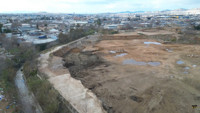
29.12.2024 © GEORGE TSAPOGAS 
29.12.2024 © GEORGE TSAPOGAS 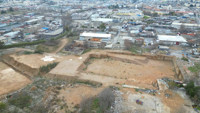
29.12.2024 © GEORGE TSAPOGAS 
29.12.2024 © GEORGE TSAPOGAS 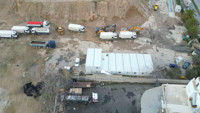
29.12.2024 © GEORGE TSAPOGAS
22.11.2024

22.11.2024 © GEORGE TSAPOGAS 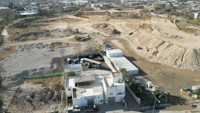
22.11.2024 © GEORGE TSAPOGAS 
22.11.2024 © GEORGE TSAPOGAS 
22.11.2024 © GEORGE TSAPOGAS 
22.11.2024 © GEORGE TSAPOGAS 
22.11.2024 © GEORGE TSAPOGAS
12.09.2024

12.09.2024 © GEORGE TSAPOGAS 
12.09.2024 © GEORGE TSAPOGAS 
12.09.2024 © GEORGE TSAPOGAS 
12.09.2024 © GEORGE TSAPOGAS 
12.09.2024 © GEORGE TSAPOGAS 
12.09.2024 © GEORGE TSAPOGAS 
12.09.2024 © GEORGE TSAPOGAS 
12.09.2024 © GEORGE TSAPOGAS 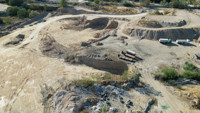
12.09.2024 © GEORGE TSAPOGAS
20.07.2024

20.07.2024 © GEORGE TSAPOGAS 
20.07.2024 © GEORGE TSAPOGAS 
20.07.2024 © GEORGE TSAPOGAS 
20.07.2024 © GEORGE TSAPOGAS 
20.07.2024 © GEORGE TSAPOGAS 
20.07.2024 © GEORGE TSAPOGAS
01.06.2024

01.06.2024 © GEORGE TSAPOGAS 
01.06.2024 © GEORGE TSAPOGAS 
01.06.2024 © GEORGE TSAPOGAS 
01.06.2024 © GEORGE TSAPOGAS 
01.06.2024 © GEORGE TSAPOGAS 
01.06.2024 © GEORGE TSAPOGAS
26.04.2024

26.04.2024 © GEORGE TSAPOGAS 
26.04.2024 © GEORGE TSAPOGAS 
26.04.2024 © GEORGE TSAPOGAS
07.02.2024

07.02.2024 © GEORGE TSAPOGAS 
07.02.2024 © GEORGE TSAPOGAS 
07.02.2024 © GEORGE TSAPOGAS
23.11.2023

23.11.2023 © GEORGE TSAPOGAS 
23.11.2023 © GEORGE TSAPOGAS 
23.11.2023 © GEORGE TSAPOGAS 
23.11.2023 © GEORGE TSAPOGAS 
23.11.2023 © GEORGE TSAPOGAS 
23.11.2023 © GEORGE TSAPOGAS
10.09.2023

10.09.2023 © GEORGE TSAPOGAS 
10.09.2023 © GEORGE TSAPOGAS 
10.09.2023 © GEORGE TSAPOGAS 
10.09.2023 © GEORGE TSAPOGAS 
10.09.2023 © GEORGE TSAPOGAS 
10.09.2023 © GEORGE TSAPOGAS
06.07.2023

06.07.2023 © GEORGE TSAPOGAS 
06.07.2023 © GEORGE TSAPOGAS 
06.07.2023 © GEORGE TSAPOGAS 
06.07.2023 © GEORGE TSAPOGAS 
06.07.2023 © GEORGE TSAPOGAS 
06.07.2023 © GEORGE TSAPOGAS 
06.07.2023 © GEORGE TSAPOGAS 
06.07.2023 © GEORGE TSAPOGAS 
06.07.2023 © GEORGE TSAPOGAS
07.05.2023

07.05.2023 © GEORGE TSAPOGAS 
07.05.2023 © GEORGE TSAPOGAS 
07.05.2023 © GEORGE TSAPOGAS 
07.05.2023 © GEORGE TSAPOGAS 
07.05.2023 © GEORGE TSAPOGAS 
07.05.2023 © GEORGE TSAPOGAS
26.03.2023

26.03.2023 © GEORGE TSAPOGAS 
26.03.2023 © GEORGE TSAPOGAS 
26.03.2023 © GEORGE TSAPOGAS 
26.03.2023 © GEORGE TSAPOGAS 
26.03.2023 © GEORGE TSAPOGAS 
26.03.2023 © GEORGE TSAPOGAS

 StadiumDB
StadiumDB